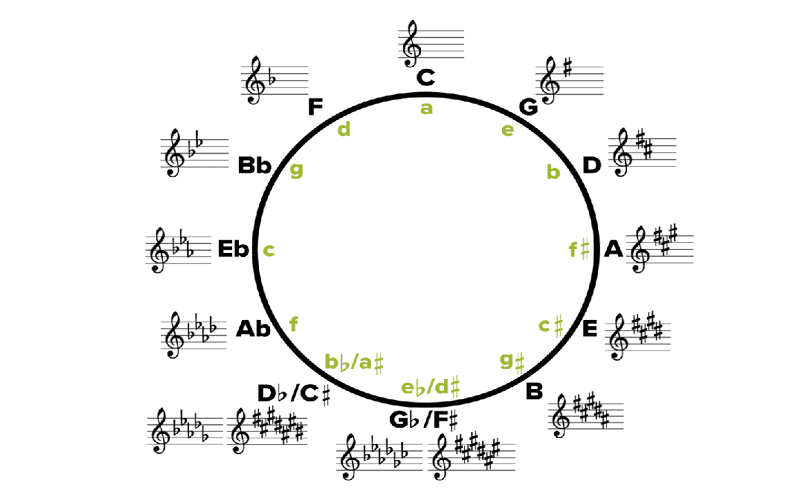The key signature for Decorator LiveTune varies with each performance, setting musical rules that help musicians play together and improvise smoothly.
Discover how key signatures play a crucial role in the Decorator LiveTune system. We’ll break down their impact on live performances and improvisation. Whether you’re a performer or a music enthusiast, learn how these signatures influence and guide the musical experience.
This article will break down what a key signature is and how it applies to the Decorator Livetune, offering clarity on its functionality and application.
What is a Key Signature?

A key signature is a set of sharp or flat symbols placed at the beginning of a musical staff. It indicates the key of the piece, helping musicians understand which notes are to be played consistently sharp or flat throughout the composition. Key signatures define the tonal centre and establish the scale on which the music is based.
What is Decorator LiveTune?
Decorator LiveTune is a system used by musicians during live performances to adjust and shape the music in real-time. It helps musicians change how a piece sounds while they are playing, allowing them to respond to the energy of the audience and the feel of the moment.
This system uses a key signature, which sets the basic rules for which notes are played, but it can be adapted as the performance progresses.In simple terms, Decorator LiveTune lets musicians be creative and flexible on stage.
By understanding the key signature, they can stay in tune with each other and improvise effectively, making each performance unique and engaging.
Practical Tips for Using Key Signatures in Decorator Livetune:

Working with key signatures in Decorator Livetune can significantly impact the quality and cohesiveness of your music. Here are some practical tips to help you make the most of key signatures in your music production:
Experiment with Different Keys:
Don’t be afraid to experiment with various key signatures to find what best suits your track. Each key signature can impart a distinct emotional quality to your music. For instance, shifting from C major to A minor can dramatically change the mood of your composition. Exploring different keys helps you discover new sonic possibilities and can inspire unique creative directions.
Match the Key Signature to the Desired Mood:
Align your key signature with the mood or theme you want to convey. Major keys generally create a bright, uplifting atmosphere, while minor keys often evoke a more somber or introspective feel. By choosing the appropriate key signature, you can enhance the emotional impact of your music and ensure it resonates with your intended audience.
Utilize Key Signature Presets:
Decorator Livetune may offer presets or templates based on popular key signatures. These presets can serve as a great starting point, providing a foundation for your track. They can help streamline your workflow and allow you to focus on creativity rather than manual adjustments. Explore these options to quickly get into a productive flow.
Also Read: Is The Mood Decor Turntable Functional – Discover Its Top Features and Benefits!
Use Key Signatures to Guide Chord Progressions:
Key signatures play a crucial role in defining the harmonic structure of your track. Use them to create chord progressions that fit within the chosen key. This ensures that your chords and harmonies are consistent and pleasant to the ear. For example, in a major key, you might use the I-IV-V-I progression to build a strong harmonic foundation.
Build Melodies that Complement the Key:
When crafting melodies, ensure they stay within the notes defined by your key signature. This alignment helps maintain harmonic coherence and prevents dissonance. Decorator Livetune’s tools can assist in generating melodies that naturally fit the key, making it easier to produce music that sounds harmonious and well-structured.
Pay Attention to Automated Adjustments:
Decorator Livetune might offer automated features that adjust notes and chords based on the key signature you select. While these features can simplify your work, it’s important to review the changes to ensure they align with your creative vision. Fine-tuning these adjustments can help achieve the exact sound you’re aiming for.
Regularly Check Key Signature Settings:
As you progress with your track, regularly check and adjust your key signature settings if needed. Sometimes, a change in the musical direction or arrangement might warrant a different key. Staying flexible and attentive to these adjustments can help you maintain the integrity of your music throughout the production process.
How Does the Key Signature Affect Performance?
The key signature plays a crucial role in how music is performed. Here’s how it impacts different aspects of playing or singing:
1. Influences Playing Techniques:
The key signature determines which notes are used in the music. This affects how you play your instrument. For example, keys with many sharps might be trickier on some instruments, while keys with fewer sharps or flats can be easier to handle.
2. Affects Vocal Comfort:

For singers, the key signature affects the pitch of the notes. If the key is too high, it may be difficult to reach certain notes comfortably. If it’s too low, it might not suit the singer’s range. Choosing the right key makes it easier for singers to perform without straining their voice.
3. Shapes Expression and Dynamics:
The key signature can influence how you express emotions and control volume in your performance. Some keys might make it easier to play softly or loudly, or to convey certain feelings.
4. Guides Interpretation and Style:
The key signature affects the overall feel of the piece. For example, music in a minor key might sound more serious or sad, while music in a major key might feel happier or brighter. The key helps shape how you interpret and present the music.
5. Helps with Arrangements:
When adapting music for different instruments or groups, the key signature guides how to make changes. Adjusting the key can make the music easier to perform on certain instruments or fit better with other parts.
6. Ensures Group Coordination:
In ensemble settings, everyone needs to play or sing in the same key to stay in sync. The key signature ensures that all musicians or vocalists are aligned, creating a cohesive performance.
7. Determines Difficulty:
Different keys can be easier or harder to perform, depending on the instrument. Keys with many sharps or flats might be more complex, while simpler keys can be more manageable. The key signature affects the overall difficulty of the music.
FAQs:
1. What does a key signature tell you in music production?
A key signature shows which notes are sharp or flat throughout a piece, establishing the tonal center and scale for harmony.
2. How does the key signature impact live performances with Decorator Livetune?
It sets the rules for notes and chords, helping musicians stay coordinated and improvise effectively during live shows.
3. Is it possible to change the key signature mid-performance?
Yes, you can adjust the key signature during a performance, allowing real-time adaptation based on the audience and setting.
4. What are the benefits of experimenting with different key signatures in Decorator Livetune?
Experimenting with keys reveals new emotional effects and musical ideas, helping you find the best fit for your track’s mood.
5. Why should musicians pay attention to key signature changes during a live set?
Staying aware of key signature changes ensures harmony and coherence, keeping the performance smooth and engaging.
CONCLUSION:
Key signatures are essential in music production and live performances, guiding which notes and chords are used. They help maintain harmony and enable musicians to adapt and improvise effectively. Experimenting with different keys can enhance emotional expression and ensure a cohesive and engaging performance.




